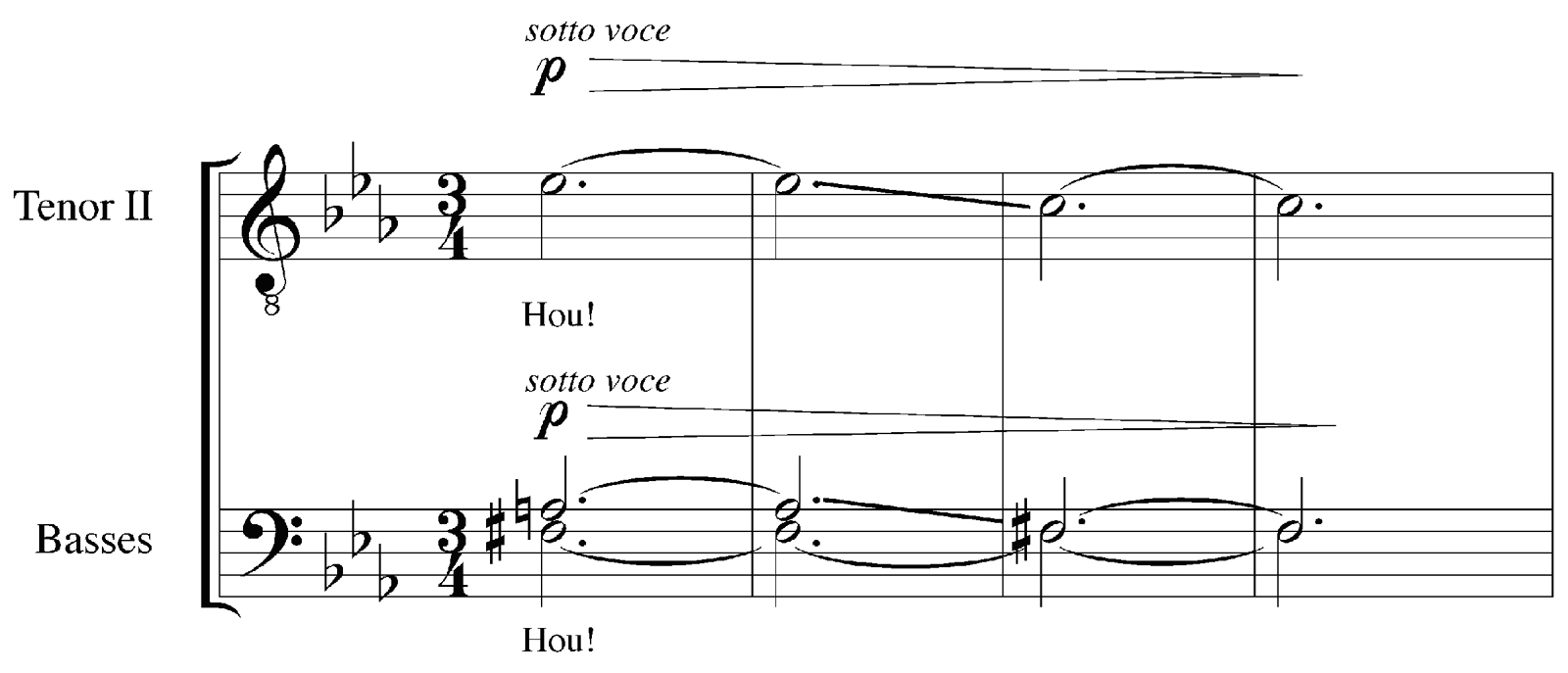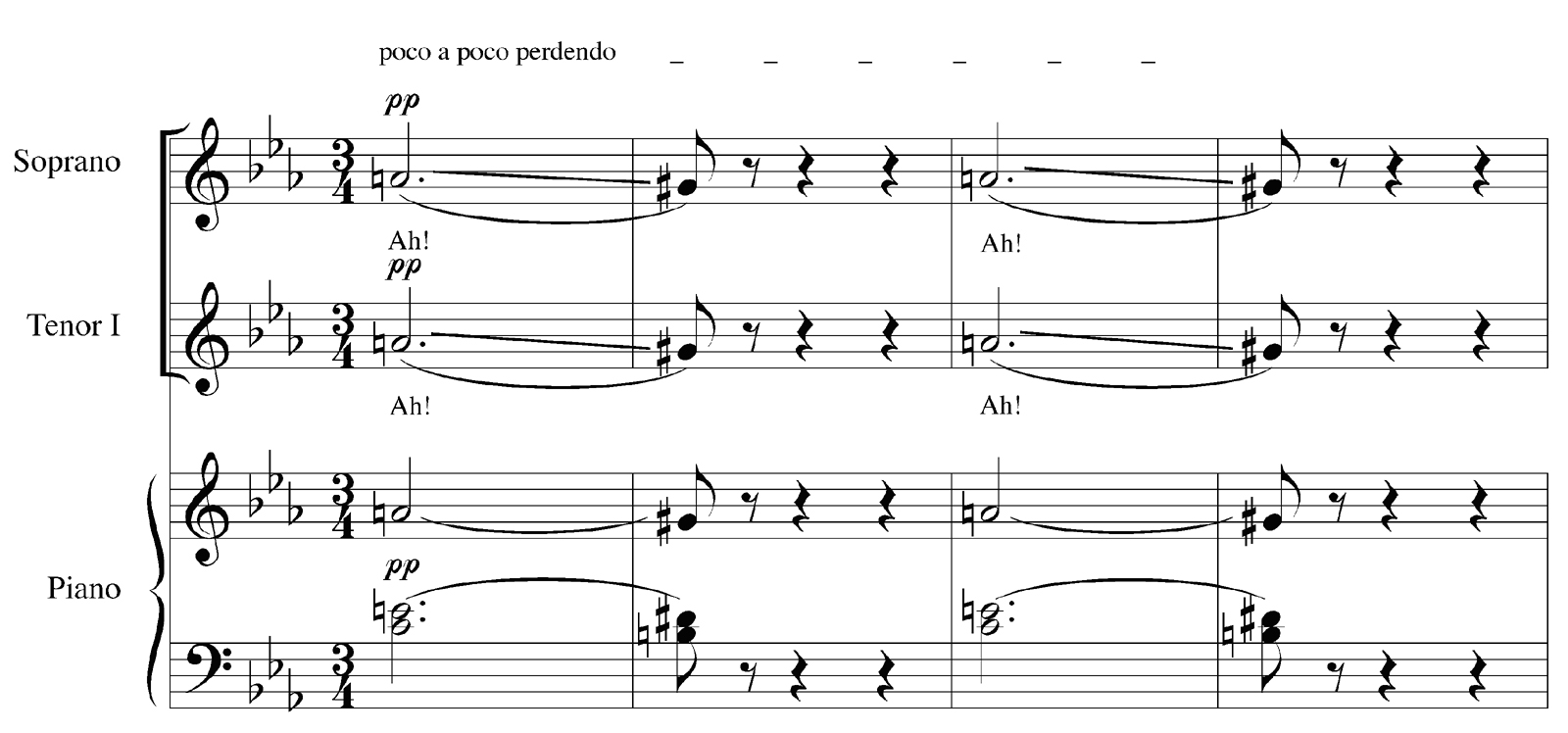Dramatic Vocalise Database
Hector Berlioz (1803–69)
Le Ballet des Ombres [Op. 2] (1828 [published 1829])
The first resonances from Berlioz’s exposure to Der Freischütz appeared in a piece for chorus and piano. Published in 1829 as Opus 2, and then withdrawn from publication by Berlioz, Le Ballet des ombres, ronde nocturne for chorus (STTBB) and piano is an important early work due to its descriptive element. As Berlioz stated in a letter dated 24 April 1829 to Albert de Boys, author of the text, “I haven’t spoken to you as of yet about your round. I thank you, for it is extremely original and if I find an occasion, I will use it.” 1
Berlioz prefaced the score with a selection from act 3, scene 3 of Shakespeare’s Hamlet.2 At the end of the first choral phrase the divisi tenors and basses sing the text “Hou!” while their harmony shifts from a diminished seventh chord to a tritone.

Berlioz, Le Ballet des ombres, mm. 19–22
Within the score Berlioz indicates portamento between the two harmonic structures.3 At the end of each of the three strophes the sopranos and first tenors sing a descending portamento semi-tone figure on the word “Ah,” lamenting their non-corporeal status.

Berlioz, Le Ballet des ombres, mm. 92–95
Although no performances of Le Ballet des ombres are known to have occurred during his lifetime, Berlioz later reused sections from the piece in the first version of Benvenuto Cellini (1838) and in Roméo et Juliette, op. 17 (1839).
(Nauman 2009, 35–37)
Examples | Comments |
| Le Ballet des Ombres |
Footnotes
1 Hector Berlioz, Correspondance Générale, vol. 1, ed. Pierre Citron (Paris: Flammarion, 1972), 249: “Je ne vous ai pas encore parlé de votre ronde, je vous en remercie, elle est fort originale et si j’en trouve l’occasion je l’utiliserai.”
2 Hector Berlioz, Le Ballet des ombres, ronde nocturne, ed. Ian Rumbold, in New Edition of the Complete Works of Hector Berlioz, vol. 14 (Kassel: Bärenreiter, 1996), 99. A reproduction of the title page of Le Ballet des ombres, reproduced from Adolphe Jullien, Hector Berlioz, sa vie et ses oeuvres (Paris, 1888), 41, clearly shows in English the following text:
‘Tis now the very witching time of night,
When churchyards yawn, and hell itself breathes out
Contagion to this world . . .
3 Ibid., 3: “Le signe \ placé entre deux notes indique qu’il faut traîner la voix de l’une à l’autre.” [“The sign \ placed between two notes indicates that one should slide the voice from one [note] to the other.”]